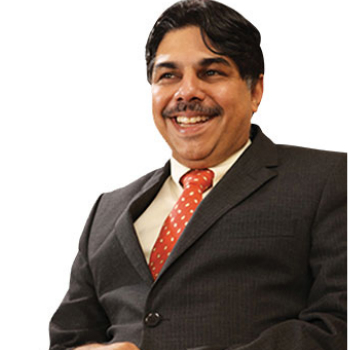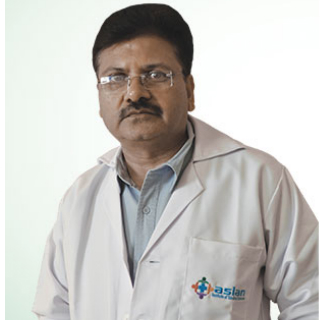
Dr V M Thomas, Director, Chennai Fertility Centre, is a leading embryologist and pioneer in IVF. In conversation with John Samuel S, critical care nurse at Global Healthcity, Chennai, he spells the IVF success
Infertility rate is increasing steadily since the last decade. What would be the cause of such trend among Indians?

In recent years, there has been a great change in food habits. In other words, our lifestyle has changed a lot. Today, people turn to junk foods, sleep less than eight hours a day and work in night shifts (like those who work in the call centres). All of these have deleterious effect on fertility and produce changes in semen parameters. Male factor infertility is also on the rise. Obesity is one of the causes of surge in infertility rate. Obesity causes a lot of hormonal changes in the body. Another cause of infertility is when people decide to marry and start their family late. As the age increases, fertility rate drops.
Who should undergo fertility tests and its significance?
Normal couples (otherwise healthy) who are unable to conceive even after one year of unprotected sex must first consult a fertility specialist. There are certain people with high risk factors like “ late marriage (say age of the partner greater than 35 years), irregular periods, thyroid disorder, previous surgeries and cancer treatment during childhood. These people need to come for fertility uation after six months of trying for a baby.

IVF is tried after all other methods of ART (Assisted Reproductive Technology) have failed. How promising is IVF in such cases?
Previously, IVF was used as the last resort for fertility treatment. In the past, scenario was like this “people kept trying for many years with minor therapies like IUI (intrauterine insemination) and others. In those days, success rate of IVF treatment was low “ pregnancy was only occasional. However, now in modern day, the situation has changed. Today, IVF success rate is up to 80 percent. The indications for IVF have changed, and many people opt for IVF.
IVF is quite a costly procedure. Is cost an issue in selection of this procedure?
Most of the patients who come to our clinic can afford it. There are also patients who cant afford even the basic costs involved.
Is there any cost-cutting measures involved for those who cannot afford the whole cost of the procedure?
One cost-effective option is using natural cycle, but the success rate is comparably lesser. The second measure is by use of minimal stimulation protocol “ injections are given for less number of days in a minimal dose. By employing this protocol, the cost becomes half of the original cost and that too with reasonable success rates.
In India, it is a common practice to introduce more than one embryo. What are the chances for multiple births after IVF?
There are chances of multiple pregnancies, but it depends. If you take into consideration the individual patient profile, the number of embryos chosen for each patient cannot be constant. For patients undergoing the first cycle of IVF, only a less number of embryos could be transferred. It also depends on the endometrial (the inner-most lining of uterus or womb) thickness and underlying disorders. There are recent advancements in IVF that cuts the chances of multiple pregnancies like choosing and transferring day five embryo instead of conventional day three embryo. The latest advancement is called as blastocyst transfer. Under this technique, all embryos are observed till day five, and only those embryos with growth potential are transferred. By this, we aim to cut short the chances of multiple pregnancies. Moreover, many IVF centres are moving to single embryo transfer norm by which the multiple pregnancy rate is going to come even less.
“Many IVF centres are moving to single embryo transfer norm by which chances of multiple pregnancy rate is becomes even less”
What challenges do you face with egg donation and surrogacy? What is your vision for surrogacy in near future?
Our centre has egg donation programme, but we are not into surrogacy programme much. Egg donation, if done correctly, doesnt cause any trouble.
With legalizing surrogacy in India, to what extent does the legislation protect the stakeholders?
There are a lot of controversies involved, and we are not actually involved with surrogacy.
What lifestyle modifications do you advice for couples with infertility?
Couples should have adequate rest and sleep, regular intercourse (many couples who do visit us tell us they do it once a month, that is grossly inadequate), avoid junk foods and increase intake of green leafy vegetables and fruits.
What is the success rate of IVF at Chennai Fertility Centre, and what is your USP?
Our success rate is around 80 to 90 percent. We also treat patients who have had previous failed IVF treatments in hospitals elsewhere. Majority of our patients are of this kind, and when they come for treatment at our hospital, it might be their third or fourth attempt. Even in those patients, we are able to achieve a success rate of 80 to 90 percent.
Our USP lies in our high success rate in IVF treatment. There are many factors responsible for this. We all know about the doctor who cares for the patient, but there are also other people involved in the treatment “ the embryologist who handles the gametes, and in-charge of the embryology lab where fertilization and embryo development happens. Pregnancy will result only if the embryologist gives good quality embryos. Most of the patients do not know this fact. So, an embryologist also plays a crucial role in IVF.
Be a part of Elets Collaborative Initiatives. Join Us for Upcoming Events and explore business opportunities. Like us on Facebook , connect with us on LinkedIn and follow us on Twitter , Instagram.









